
Jan 10, 20205 min read
Sober travel: how to have a great night out in Europe’s top cities without alcohol


An outdoor pool at Széchenyi Baths, Budapest. Izabela23/Shutterstock
Welcome to Budapest, the “World’s Spa Capital.” In this captivating, cultured city, nothing feels more relaxing than plunging into a thermal pool and soaking away your stress and worries in warm, muscle-melting, mineral-rich waters.
A landlocked country with an undying love for water, Hungary is blessed by naturally heated springs bubbling up from below the ground. With its famously elegant bathhouses, Budapest is a paradise for those seeking relaxation, healing and a bit of quirky local culture.
But these aren’t just any old baths – they’re architectural marvels, portals to the past, sanctuaries of wellness, social hot spots and a quintessential part of the Budapest experience. Plan your visit to Budapest’s thermal baths with this guide to the city's best bathhouses, spa etiquette and what to bring.
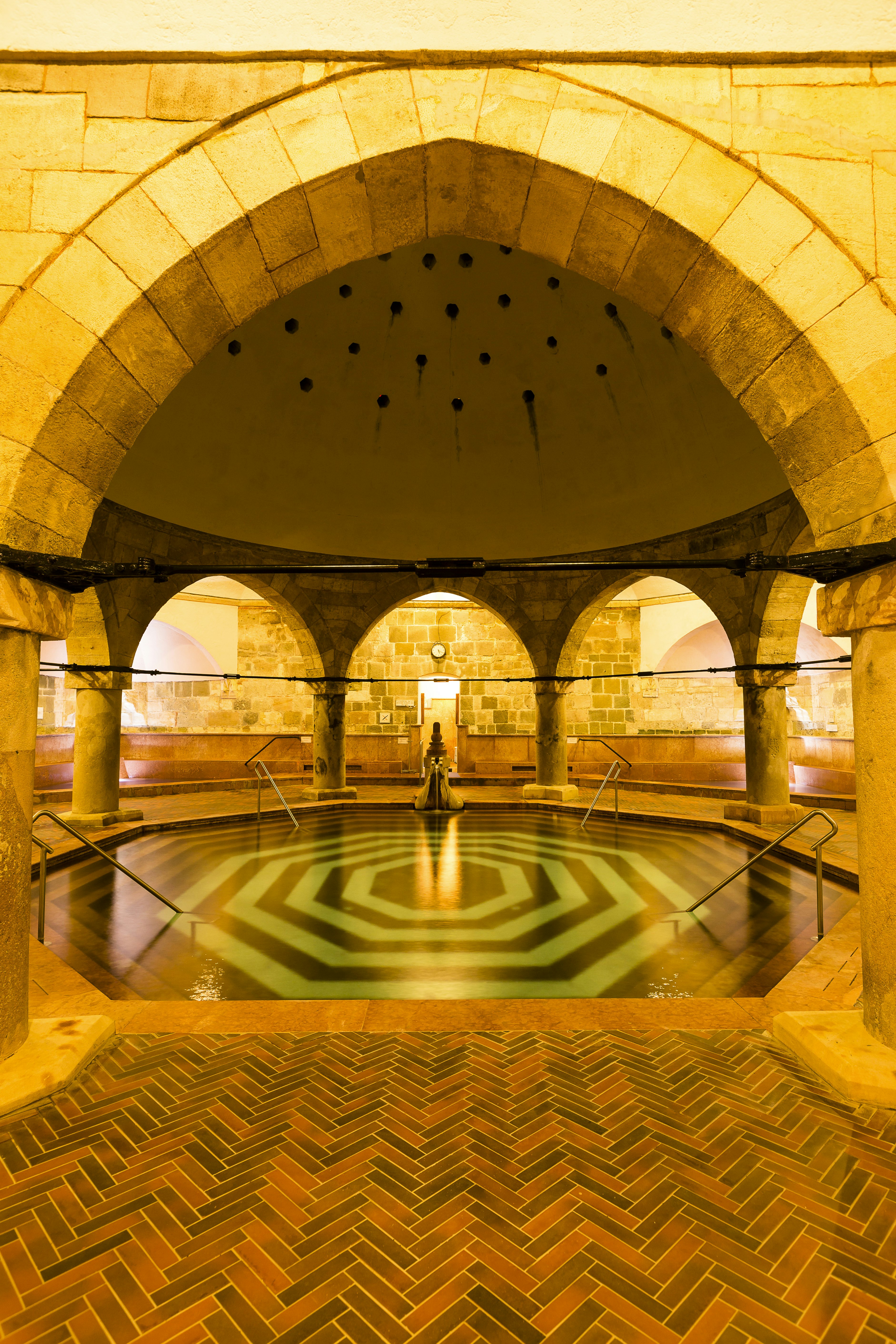
Hungary is awash with thermal springs – there are more than 1000 in the country and more than 100 in Budapest alone. Before the Roman conquest, the area around present-day Budapest was inhabited by a Celtic tribe, the Eravisci, who named this land Ak-ink (Abundant Water).
Romans built the regional capital of Aquincum and quickly began taking advantage of Hungary’s thermal springs, as evidenced by the ruins of Roman bathhouses found around the country’s borders. The most notable spa in Aquincum was the Thermae Maiores (Great Bath) near Flórián tér in Óbuda, which had luxuries such as hot and cold piped water and underfloor heating.
But bathing only became an integral part of life in Hungary during the Ottoman Occupation in the 16th and 17th centuries. The Ottomans built elegant hammam-style baths consisting of octagonal pools topped by high-domed ceilings dotted with glass inlays, allowing rays of light to shine through and strike the water. Two of these historic bathhouses – Rudas Baths and Veli Bej Baths – are still in use today. Most of Budapest’s other historic baths, such as Széchenyi Baths or Gellért Baths, were built in the 19th and 20th centuries, during Budapest's time as the second capital of the Austro-Hungarian Empire.

Many Budapest bathhouses boast about the healing properties of their waters. Bubbling up from a network of underground caves, the warm waters are rich in dissolved minerals such as calcium, hydrogen carbonate, magnesium, sodium, sulfate chlorides and metaboric acid. A mineral bath isn't just pampering and calming, it's also curative.
Studies have shown that bathing in mineral-rich water can help to relieve a number of health problems ranging from arthritis and muscle pain to slipped discs, circulatory disorders, nerve pain, respiratory illnesses, orthopedic issues and even hangovers.
It isn’t just muscles and bones that benefit from the mineral-rich waters. Drinking the spa waters is said to boost your health from within, and locals swear by this. If you’d like to give this liquid treatment a go, visit the ivócsarnok (drinking halls) of Széchenyi, Lukács and Rudas Baths. All three sell potable spa water for a small price, though it’s best to bring your own bottle.
Most baths operate year-round and are wonderful to visit in every season, but soaking outdoors in winter and watching the steam rise into the air while snow freezes your hair is the most magical experience. At weekends and during the winter holiday season, people pack into the baths like sardines, so for a more peaceful experience, visit on weekdays or early in the morning.
Opening times vary depending on the day of the week and the bathhouse, and some baths now open at night on the weekends. The collective Spas Budapest website has lots of useful information. Most baths have decent restaurants or a cafeteria, making it possible to spend a whole day there.

Meet your new travel partner
Get unlimited data while you travel with Holafly eSIM. Peace of mind and no hidden fees wherever you go.
Kids must be 14 or older to use the thermal baths as their cardiovascular systems can be affected by the high water temperatures. Pregnant women are also advised not to bathe in the thermal waters. For family-friendly swimming, try one of the city’s many open-air lidos instead.
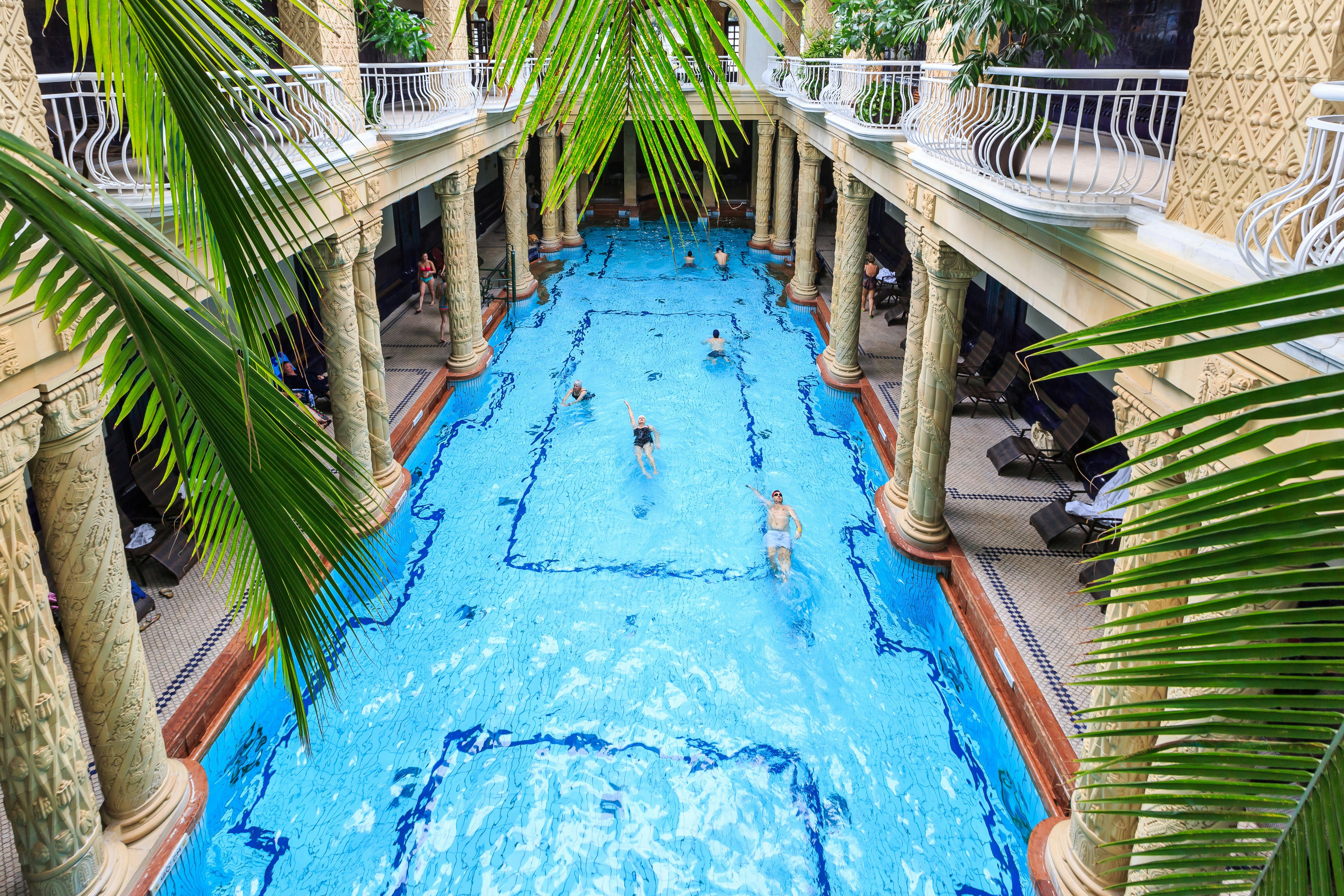
The Turkish bath section at Rudas holds single-sex days on weekdays (men only at set times on Mondays, Wednesdays, Thursdays and Fridays, and women only on Tuesdays), but the baths are open to all in high season – consult the website for specific times.
Nudity is not permitted in public areas at any thermal baths in Budapest. On single-sex days, men are given drawstring loincloths and some women wear special apron-like garments, but most people prefer to wear a swimsuit.
In most Budapest bathhouses, you'll find a series of indoor thermal pools ranging in temperature from lukewarm to piping hot, as well as colder pools for swimming laps. Other amenities include saunas, steam rooms, ice-cold plunge pools and indulgent spa services such as massages.
Except for Veli Bej, all of the baths have an outdoor section with water fountains, whirlpools and wave machines. Always specify which services you need when you enter as admission charges vary. Book ahead for additional spa treatments.
Fancy a beer bath, private bathing or a night-time soak? Some baths offer quirky and fun experiences – such as the Saturday night Sparty at Széchenyi Bath – so browse their websites for special services.
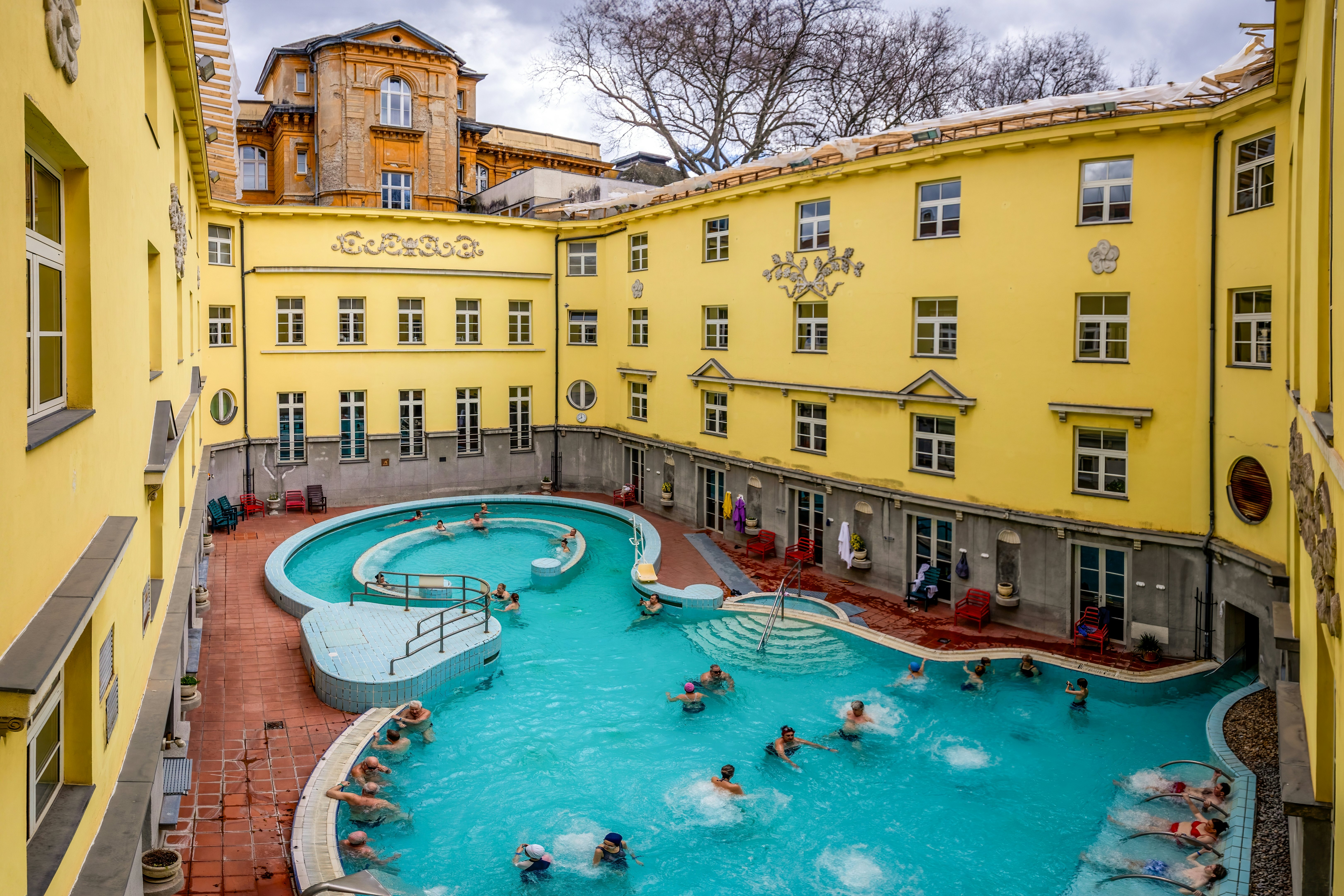
Pack swimwear, a towel and flip-flops as the floor can be quite slippery. Swimming caps must be worn in the lap pools. Bathing accessories are available to rent or buy, but it’s better – and cheaper – to bring your own. Showers and hair dryers are available, so bring soap, shampoo and other personal cleaning products.
Upon entering a bathhouse, you'll be given a watch-shaped electronic bracelet that serves as a key to a szekrény (locker) or kabin (cabin) – a more private but pricier changing cubicle where you can leave your belongings. Some baths will allocate you a number, but generally, you can just take any that are available. Attendants are always around should you need any help. The outdoor pools at Széchenyi also offer smaller poolside lockers in case you want to take your wallet or phone outside.
Take a shower before plunging into the warm waters, and tie long hair back (attendants will ask you to do so). Keep the noise to a minimum, since it can be quite echoey inside. Remember, the baths are not the same as lidos and waterparks – some people are here to heal, so anything more than quiet chatting is frowned upon. Outdoor pools with waves and whirlpools are of course different and a more relaxed mood prevails.
Avoid soaking in the warm waters for too long because you might get light-headed. Signs by the pools specify the water temperature and may advise on how much time to spend inside – generally 20 minutes at a time. Remember to stay hydrated; drinking fountains are available at most baths, but note that eating and drinking are not allowed in the pools.
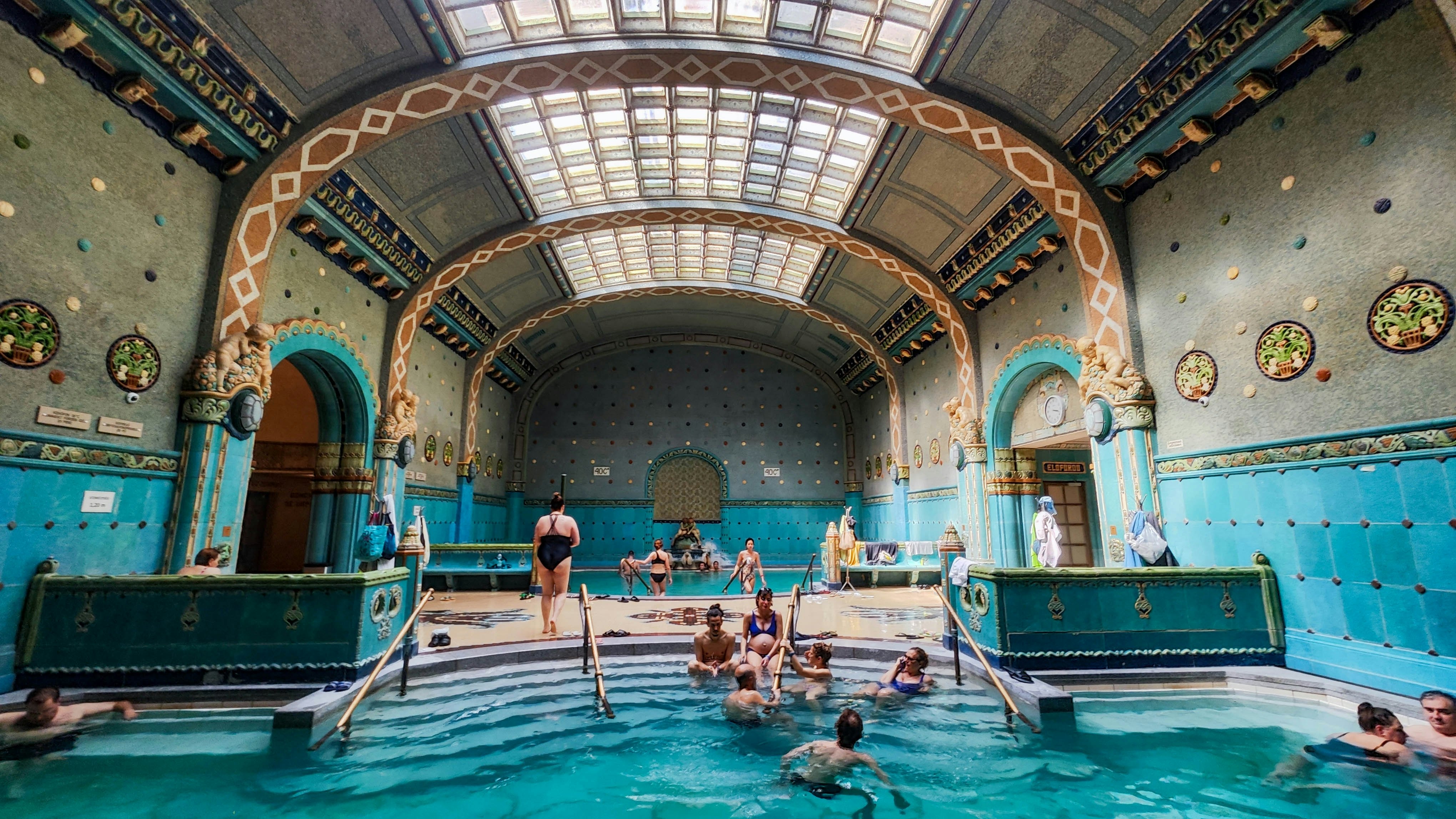
With over 100 bathhouses in Budapest, there are plenty of places to choose from. The following are the ones we consider our favorites.
If you want to see a real art nouveau masterpiece, Gellért is your go-to. Colorful tiles and mosaics adorn the walls, the stained-glass windows and marble columns are jaw-droppingly beautiful and bathing here feels like a royal ritual.
Location: Buda side, next to Gellért Hill.
The vibe: Elegant and historic.
Selling points: Its art nouveau design.
Open at night? No, closes at 7pm or 8pm in high season.
Our tip: Come early or book a private bathing session.
Széchenyi is one of the largest spa complexes in Europe, and probably Budapest’s most popular baths. It is exactly as epic as it sounds. Picture sunflower-yellow walls in a wedding cake-like building surrounding steaming outdoor pools, and the delightful sight of old chaps playing chess in the water. Regulars are happy to take on new challengers if you’re feeling brave.
Location: City Park (Városliget).
The vibe: Grand and lively.
Selling points: Lovely outdoor pools and the beer bath section.
Open at night? No. The baths close at 7pm or 8pm in high season, but a ticketed spa party with DJ music, light shows and drinks takes place here on Saturdays.
Our tip: Come early to beat the crowds or pay a little extra to relax upstairs at the less-packed Palm House.
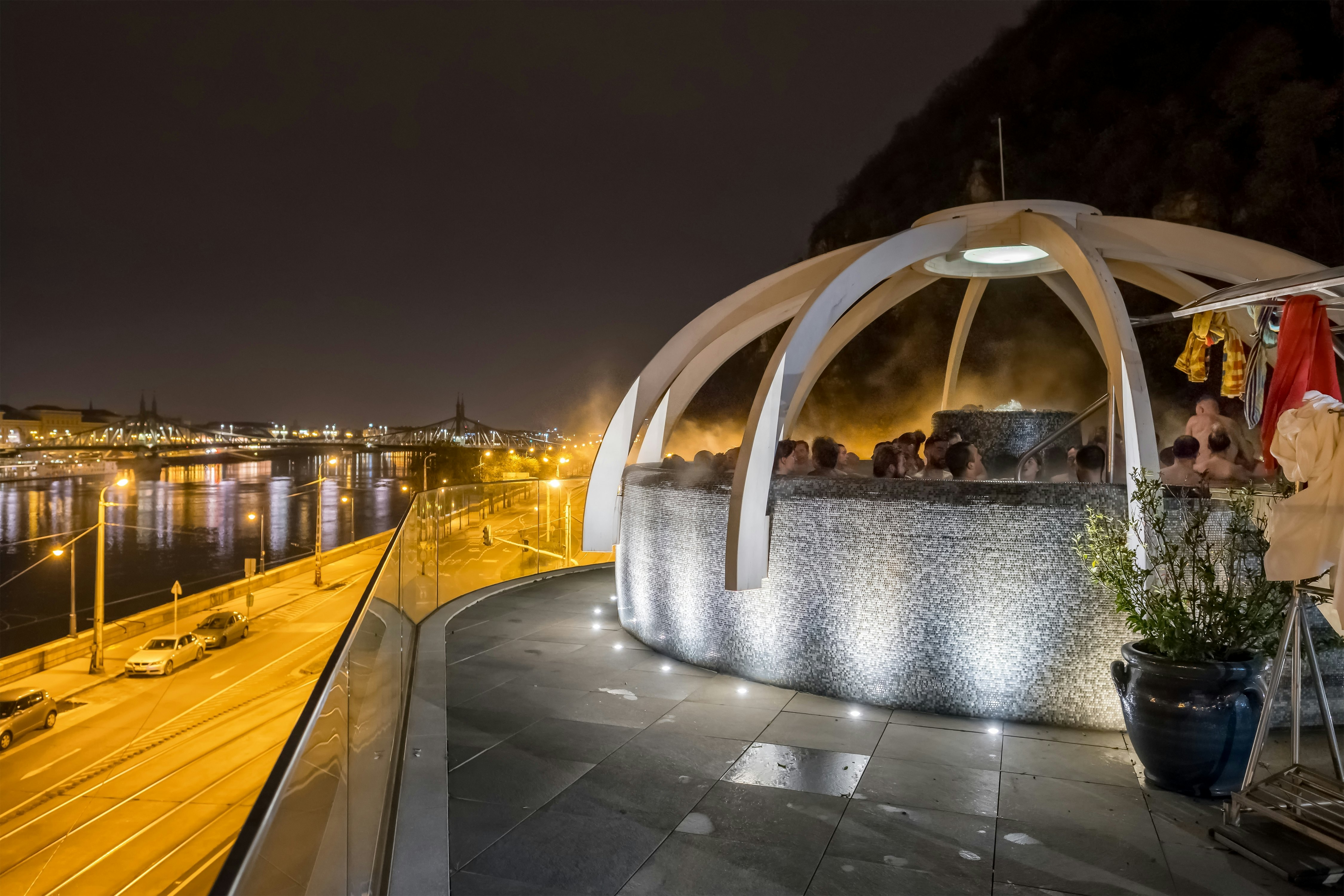
Rudas has been around since the Turkish conquest of Hungary but the baths have been fully renovated with a contemporary touch. The biggest attraction is a rooftop hot tub providing a pretty view of the Pest skyline. This is the only bath that still holds single-sex days in its Turkish bath section.
Location: Buda side, by the foot of Elizabeth Bridge.
The vibe: Ottoman-era charm with a contemporary touch.
Selling points: The rooftop hot tub.
Open at night? Yes, on Fridays and Saturdays to 3am.
Our tip: Leave enough time to explore the various saunas, steam rooms and pools; note that the rooftop hot tub gets crowded during peak hours.
Lukács is the perfect destination for an authentic and tranquil thermal bath experience, offering a peaceful escape from the city’s more crowded tourist spots. The medicinal properties of its waters are backed up by marble memorial plaques installed in the adjacent park, giving thanks in various languages to the institution and its medical staff for healing therapies.
Location: Buda side, close to Margaret Island.
The vibe: Local and tranquil.
Selling point: A true haven of health.
Open at night? No, closes at 7pm or 8pm in high season.
Our tip: Lukács also offers a beer bath and there's a drinking hall where you can taste the healing water, sourced from a dedicated well.
Less crowded than the big-name baths, Veli Bej is a venerable choice combining historical charm with modern comforts. Built in the 16th century, Veli Bej was the most beautiful bath of its time, and the original walls and pipes can still be seen inside the modern building, but there are no outdoor pools.
Location: Buda side, near Margaret Island.
The vibe: Quiet and intimate.
Selling points: Ottoman-era history with modern facilities.
Open at night: No, closes at 9pm.
Our tip: Check the opening hours; the bath takes a technical break between noon and 3pm and only opens at 3pm on Mondays and Tuesdays.